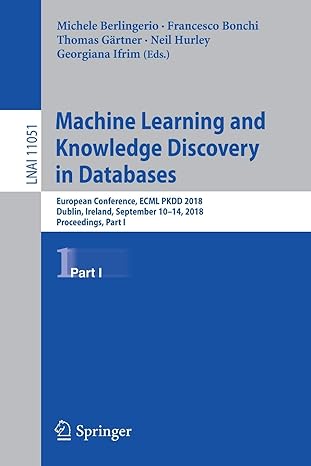Answered step by step
Verified Expert Solution
Question
1 Approved Answer
An introduction to how AI is transforming real time crime centers AI provides the ability to process and analyze vast quantities of data from multiple
An introduction to how AI is transforming real time crime centers
AI provides the ability to process and analyze vast quantities of data from multiple sources in realtime, aiding threat assessment and strategic planning
March : AM Philip Lukens
fileqhSZvexhNTfELUbobWjzyFjpg
DALLE
One of the primary benefits of integrating AI into RealTime Crime Centers RTCCs is that it provides the ability to process and analyze vast quantities of data from multiple sources in realtime, aiding threat assessment and strategic planning.
Enhanced by AI and machine learning, pattern recognition is crucial for strategic planning and threat assessment in law enforcement. It helps identify crime trends, hotspots and prevalent criminal tactics, facilitating the strategic allocation of resources, patrol scheduling and the implementation of crime prevention strategies.
In terms of threat assessment, pattern recognition can pinpoint emerging types of crime or novel criminal methods, alerting to potential threats and enabling early proactive measures.
Lets review how some of these AI algorithms work.
Image and video analysis
AI can quickly process and interpret visual data, finding patterns and anomalies that humans may miss. It can use machine learning algorithms to examine large datasets, anticipate future crimes, locate crime hotspots and propose solutions.
AI can also compare data to find connections between incidents that may seem unrelated, helping to solve crimes. Moreover, AI can be designed to avoid biases that can influence human decisionmaking, ensuring decisions are based on facts and patterns rather than beliefs or stereotypes.
AI uses deep learning models like Convolutional Neural Networks CNNs to analyze images and videos. CNNs can learn to recognize patterns in visual data, such as how a car or a person looks like.
Once trained, these models can analyze new images and recognize these patterns in realtime. For example, it can identify a car involved in a hitandrun incident by recognizing the pattern of pixels that make up the cars features such as make, model and color.
Predictive analytics and machine learning
Predictive analytics uses past data to make forecasts about the future.
One way that AI is integrated into RTCCs is by using past data to estimate probable criminal activities or locations. AI models can find patterns and trends in crime data and generate predictions based on various factors, such as time, location, weather and events.
This approach can mitigate biases, including profiling, locationbased disparities and other factors that might lead to uneven policing practices and biased crime data analysis, by developing algorithms focused on equitable law enforcement. The advantage of incorporating such algorithms lies in their ability to account for broader, pertinent contexts to promote fairness in policing.
This is often done using machine learning models. Machine Learning involves learning patterns from data and making predictions or decisions. A machine learning model could be trained on previous data to predict which areas are more likely to have higher accidents during certain times, allowing for more effective distribution of police resources. A model might be trained on past crime data to forecast future crime locations.
Natural Language Processing NLP
Natural Language Processing is about understanding and generating human language in a way that is both meaningful and useful.NLP involves several subfields, including sentiment analysis, topic modeling and entity recognition.
Sentiment analysis involves determining the sentiment positive negative, neutral of a piece of text.
Topic modeling involves identifying the main topics that a piece of text is about.
Entity recognition involves identifying named entities like people, places, and organizations in a piece of text.
These tasks are often accomplished using machine learning models like Recurrent Neural Networks RNNs or Transformers. For example, body cam footage indicating a sudden increase in negative sentiment could indicate the need for additional resources.
Anomaly detection
Anomaly detection involves identifying data points that are significantly different from the norm. This is often done using statistical methods. For example, a simple anomaly detection algorithm might flag any data point that is more than three standard deviations away from the mean. For instance, it can also alert police on a street takeover for issues such as illegal street races or gatherings.
Data fusion
Data fusion involves combining data from multiple sources to get a more complete picture of a situation. This can be a complex task, as it involves dealing with data that might be in different formats, have different levels of granularity, or be about different aspects of the situation. For instance, in the case of a reported burglary, the center could pull up
Step by Step Solution
There are 3 Steps involved in it
Step: 1

Get Instant Access to Expert-Tailored Solutions
See step-by-step solutions with expert insights and AI powered tools for academic success
Step: 2

Step: 3

Ace Your Homework with AI
Get the answers you need in no time with our AI-driven, step-by-step assistance
Get Started


